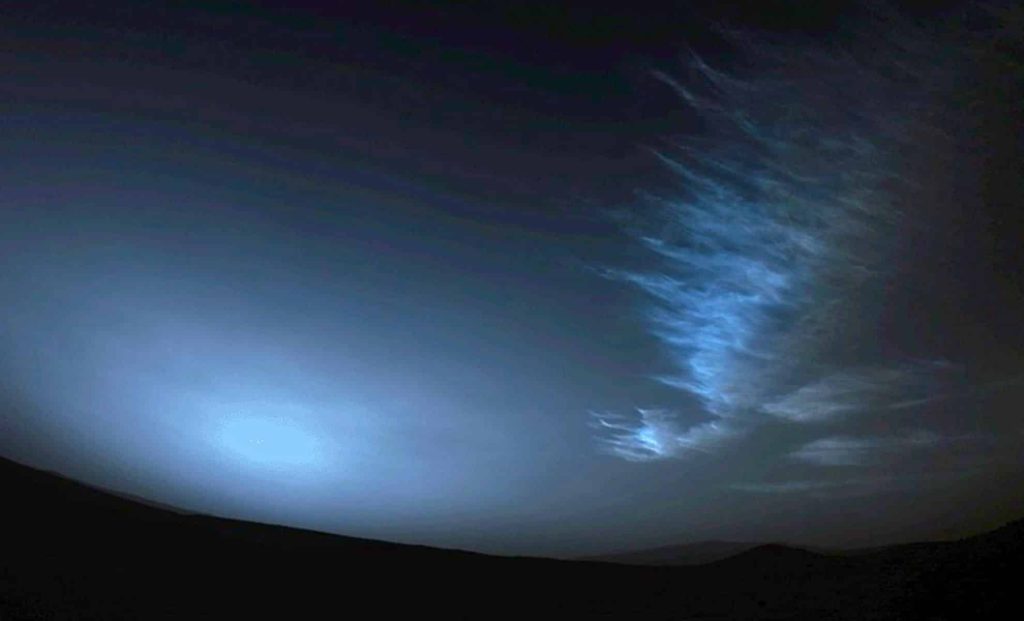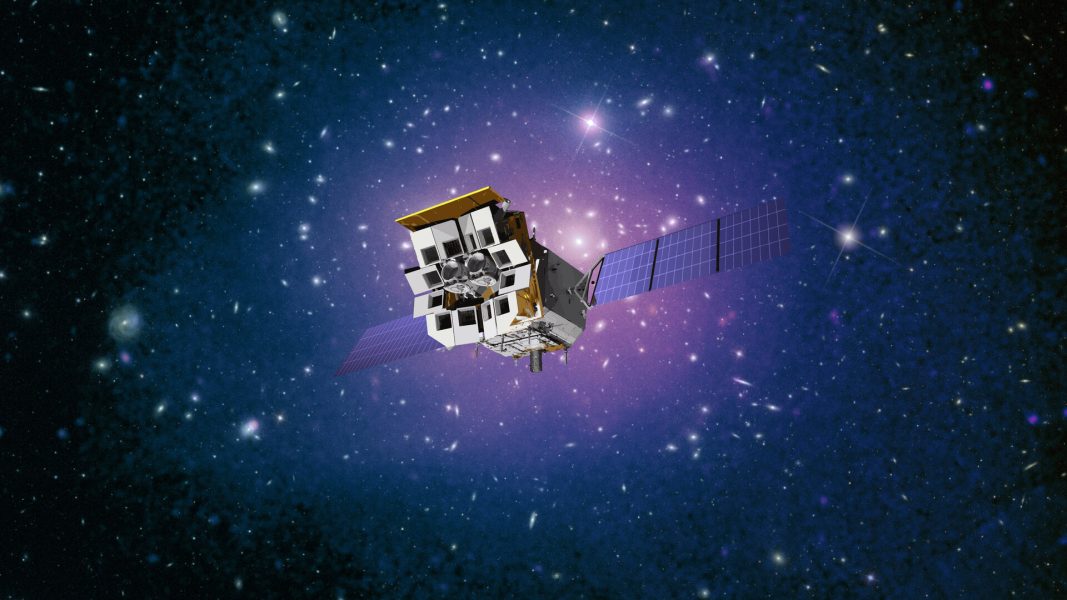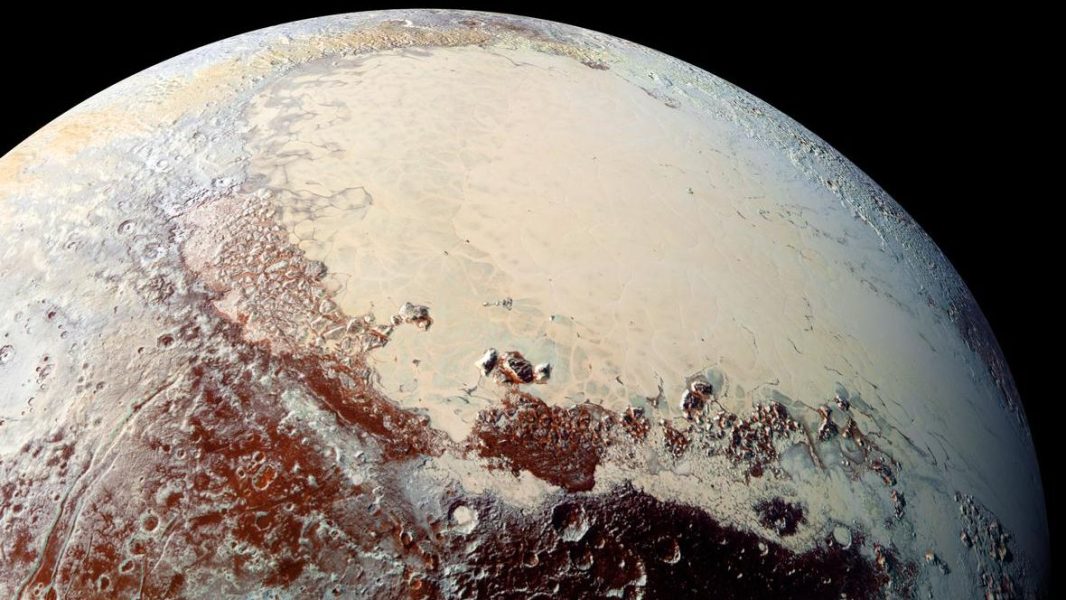For the First Time, NASA’s Curiosity Rover Records a Mesmerizing Natural Phenomenon on Mars – The Daily Galaxy –Great Discoveries Channel

Mars just revealed something unexpected in its skies, and NASA’s Curiosity rover was there to capture it. A rare phenomenon appeared at twilight, painting the atmosphere in stunning colors. Scientists weren’t expecting to see this, and its origins remain a mystery. The images are unlike anything seen before on the Red Planet.Mars is often seen as a barren, rust-colored wasteland, but NASA’s Curiosity rover has just revealed a surprising burst of color in the planet’s skies. New images taken by the rover showcase rare iridescent clouds shimmering in shades of red, green, and even rainbow hues as they drift over the Martian landscape.Captured on January 17, the stunning images were taken over a 16-minute period on the 4,426th Martian day (sol) of Curiosity’s mission. The rover’s Mastcam, a high-resolution camera system, recorded these noctilucent (night-shining) clouds, which appear during twilight when the Sun’s rays scatter off ice crystals at high altitudes.The effect is similar to Earth’s “mother-of-pearl” clouds, where light interacts with ice particles to create a mesmerizing spectrum of colors. On Mars, these clouds remain invisible during the day but come to life as the Sun sets, painting the sky in an otherworldly glow.Unlike most clouds on Mars, which consist of water ice, these iridescent formations are thought to be made of frozen carbon dioxide (dry ice). They float at an altitude of 37 to 50 miles (60 to 80 km) above the surface, with some plumes falling as low as 31 miles (50 km) before evaporating due to rising temperatures.The Martian atmosphere is 95% carbon dioxide, yet clouds of frozen CO₂ are a rarity. According to atmospheric scientist Mark Lemmon from the Space Science Institute, these clouds appear only in early autumn in the Southern Hemisphere, making them a seasonal spectacle.Interestingly, water-ice clouds were also seen in the same images, drifting at around 31 miles (50 km) above Curiosity’s location in Gale Crater.NASA’s first glimpse of these twilight clouds came over two decades ago, when the Pathfinder mission spotted them in 1997. Curiosity didn’t capture its first images of iridescence until 2019, and this marks the fourth Martian year in which the rover has observed the phenomenon.Lemmon, who led a research paper on these clouds, recalls his first sighting:“I’ll always remember the first time I saw those iridescent clouds and was sure at first it was some color artifact. Now it’s become so predictable that we can plan our shots in advance; the clouds show up at exactly the same time of year.”Each sighting allows scientists to study the size and growth rate of cloud particles, providing new insights into Mars’ atmosphere.A lingering mystery is why these specific twilight clouds have not been observed elsewhere on Mars. Curiosity, which landed in Gale Crater in 2012, has documented these clouds multiple times.However, NASA’s Perseverance rover, which has been exploring Jezero Crater since 2021, has yet to detect them. Similarly, Pathfinder’s 1997 sighting occurred north of the equator in Ares Vallis, yet these clouds remain elusive in other regions.Lemmon suggests that gravity waves—atmospheric disturbances that cool the air—could be responsible for the cloud formation. However, since Martian gravity waves are not well understood, scientists are still searching for answers.The latest twilight cloud images were taken using Curiosity’s left Mastcam, which has a stuck filter wheel that frames the photos in a partially open circle. Despite this limitation, both the left and the higher-resolution right Mastcam continue to capture valuable color images.Beyond studying clouds, Curiosity recently completed an investigation of Gediz Vallis channel and is now heading toward a site containing boxwork formations—fractures created by groundwater that resemble giant spiderwebs when viewed from orbit.The rover also recently explored an impact crater nicknamed “Rustic Canyon”, studying its erosion patterns and the composition of its rocks. By analyzing craters like this, scientists hope to uncover long-buried materials that could contain preserved organic molecules, offering a glimpse into Mars’ ancient past—and the possibility that the planet may have once supported life.Comment Save my name, email, and website in this browser for the next time I comment.
© 2024 | Daily Galaxy | All rights reserved





